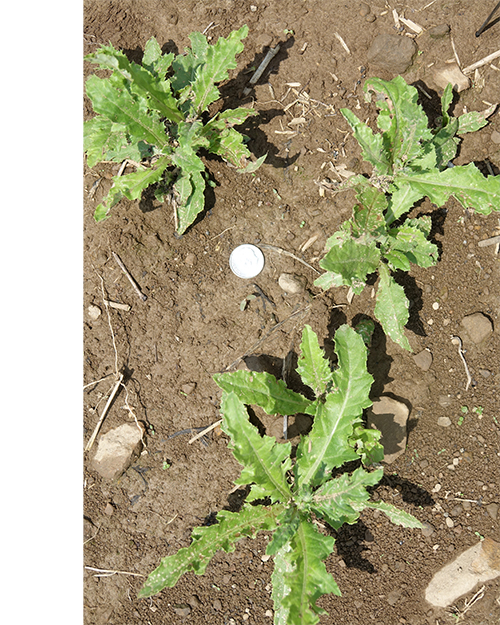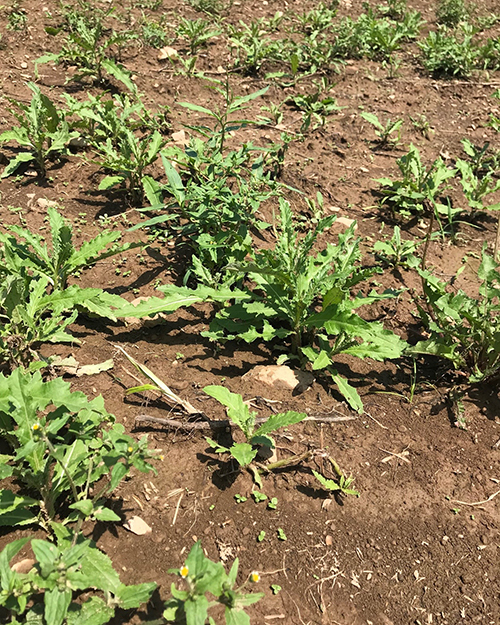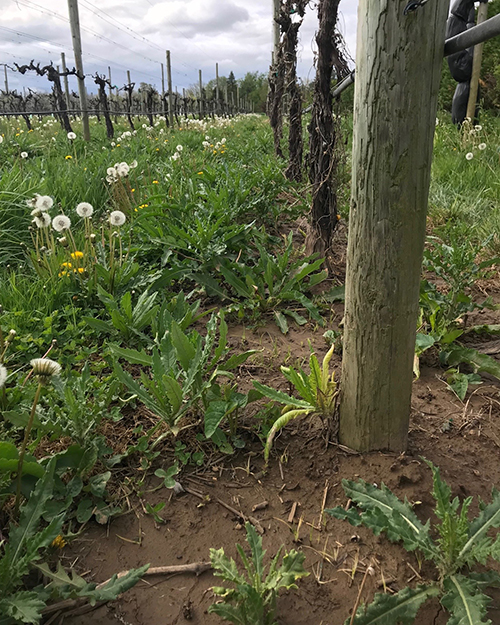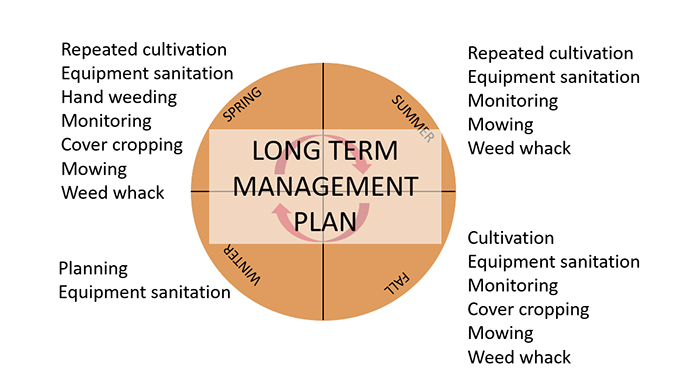Fact Sheet FS1344
Canada thistle (Cirsium arvense) is a perennial weed with a deep rooting system. It is commonly found on roadside edges, fallow land, and increasingly in farm production areas. Thistle tends to be more prevalent and therefore, a bigger issue, in perennial cropping systems, such as tree fruit and blueberries, and in no-till fields compared to annual cropping systems where there is regular cultivation. Canada thistle tolerates a wide range of soil conditions, especially in well-drained soils. It can spread rapidly by developing roots from which new shoots will emerge, and also through seed that is wind-dispersed over long distances. Because Canada thistle can form very dense patches, crops can quickly become choked out. Understanding the life cycle and biology of thistle is key to figuring out the best options for its control on your farm.
Plant Description and Growth Habit
Large thick patches of Canada thistle can form from just one plant. These patches can rapidly outcompete planted crops and serve as a root and seed source for continued spread of thistle. Eradication of established patches is difficult because of a deep root system that can easily regenerate new shoots, and small root fragments separated from the main plant can also generate new shoots. Early detection and multiple control methods are critical to prevent the establishment and spread of Canada thistle throughout the farm.



Management Strategies
Control of Canada thistle in production areas is a multi-year process involving a combination of different strategies for effective control. Once Canada thistle is found, control measures should be implemented that deplete the energy reserves found throughout the extensive root system without providing opportunities for the plant to replenish these reserves. Organic and no-spray farming operations can utilize well-timed mowing, hand weeding, cover crops, and tarp for shade to provide conditions that will help current and future crops outcompete Canada thistle. As for chemical control options, a study was completed at Rutgers that assessed the impact of Organic Materials Review Institute OMRI-approved herbicides on the growth of thistle. This research revealed that none of the products evaluated had any impact on the plants.
Prevention
Weeding, Mowing, and Cultivation
Competition
- Plant dense cover crops, like sorghum-sudangrass, that can be mowed several times during the production season.
Farm Decision Tool
Canada thistle management is a long-term process for farms not relying on herbicides or fumigants. Identification and mapping of existing Canada thistle populations on the farm, and reflection on your activities and how they impact these populations, are the first steps to developing a management plan.
Use the tables below to identify your Canada thistle populations, current management methods, and develop a plan of action to eradicate Canada thistle from your production areas.
| Field | Size of Population/Specific Locations | Suspected Introduction |
|---|---|---|
| Example: Field 4 | Single population about 15' wide | Equipment borrowed from JM |

Figure 4. Long-term management plan.
| Current Strategies | Timeframe |
|---|---|
| Example: hand weeding | spring |
| Potential Future Strategies | Timeframe |
|---|---|
| Weed on 21-day cycle, mow monthly | spring-fall |
References
- Uva, R. Weeds of the Northeast, Cornstock Publishing.
- Manage Weeds on Your Farm A Guide to Ecological Strategies.
- Crop Rotation on Organic Farms.
July 2022
Copyright © 2024 Rutgers, The State University of New Jersey. All rights reserved.
For more information: njaes.rutgers.edu.
Cooperating Agencies: Rutgers, The State University of New Jersey, U.S. Department of Agriculture, and Boards of County Commissioners. Rutgers Cooperative Extension, a unit of the Rutgers New Jersey Agricultural Experiment Station, is an equal opportunity program provider and employer.

